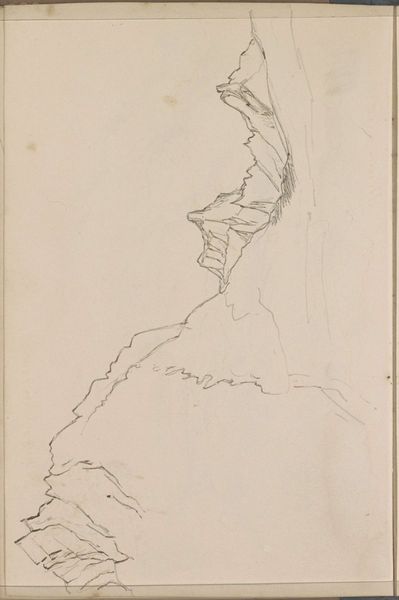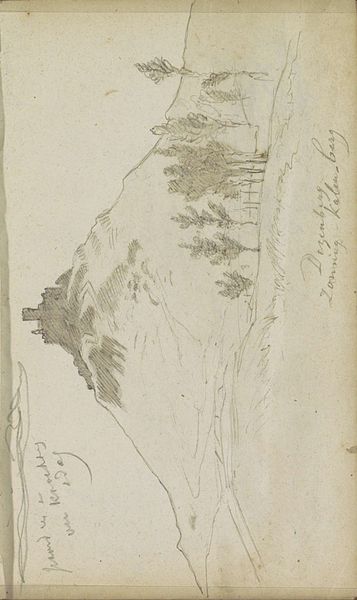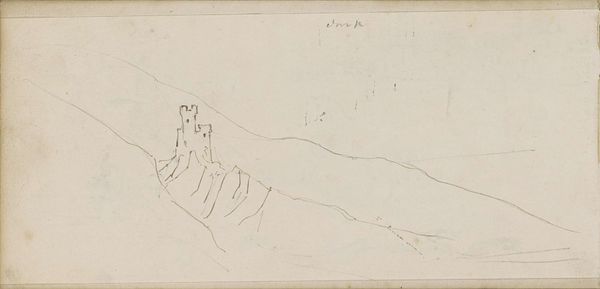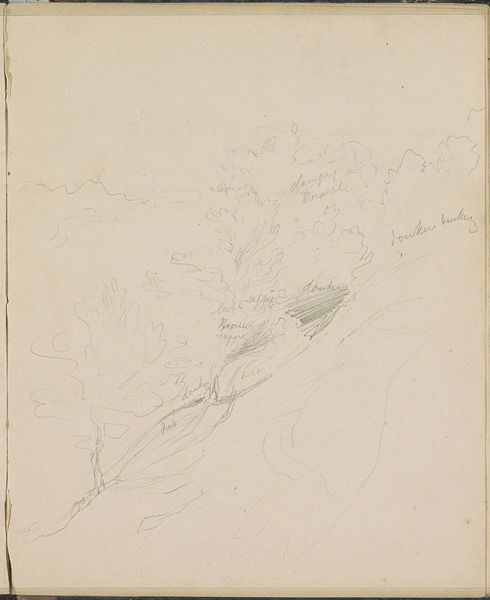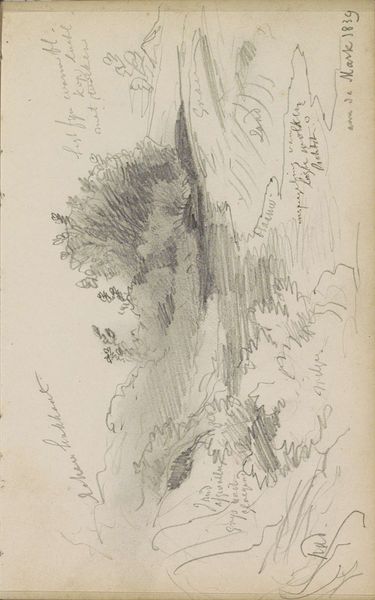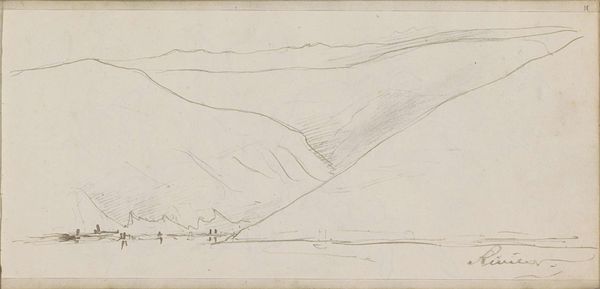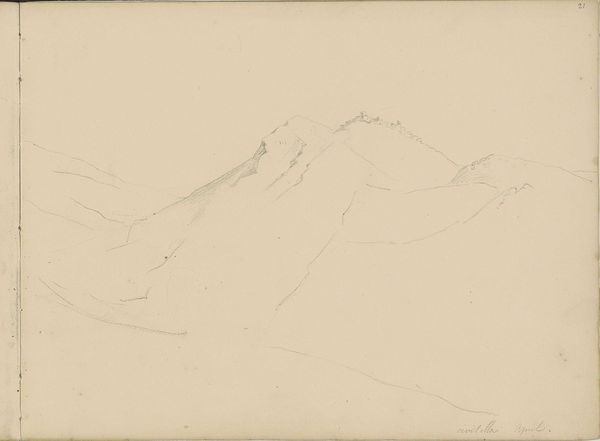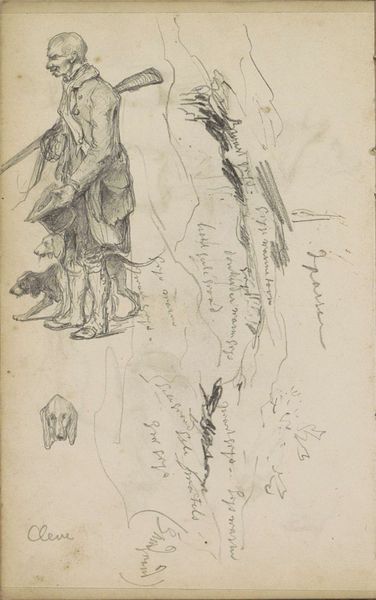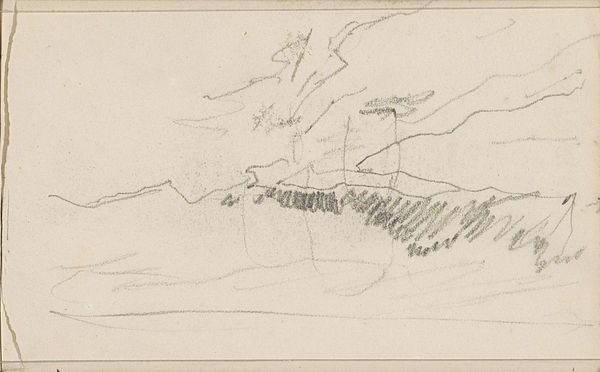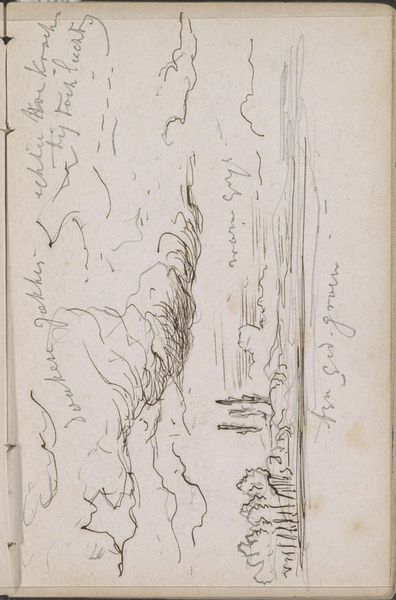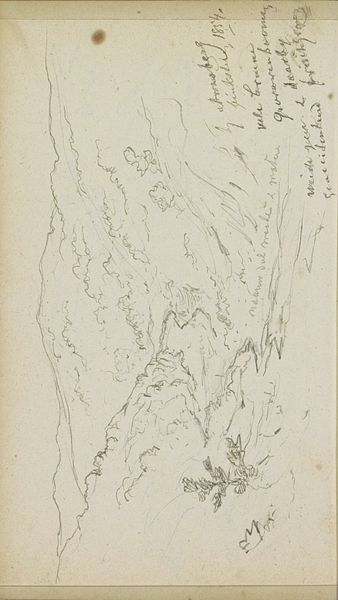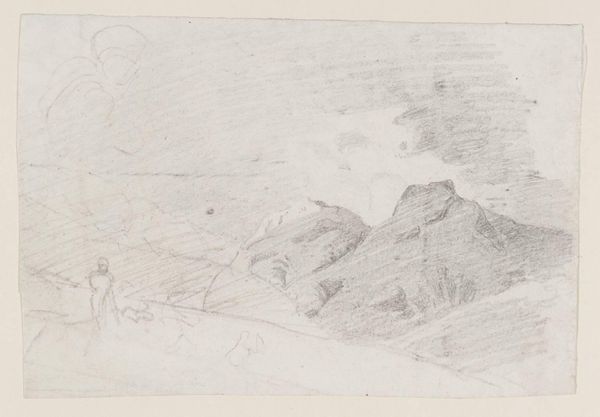
drawing, paper, pencil
#
portrait
#
drawing
#
pencil sketch
#
landscape
#
paper
#
pencil
#
watercolor
#
realism
Copyright: Rijks Museum: Open Domain
Curator: Oh, there's something melancholic about it, like a half-remembered dream of a faraway land. Editor: Yes, this is "Slot Wiesberg in het Voralgebergte" by Johannes Tavenraat, dating from 1858 to 1859. It is currently held in the collection of the Rijksmuseum. Created using pencil and paper. It shows what appears to be, perhaps, the artist himself overlooking the vista. Curator: A distant castle, some rough suggestions of mountains and what might be a man, perhaps. It’s very ephemeral. I wonder what paper and pencils Tavenraat was using at the time, and how readily available they were. Did he source local materials or were they mass-produced, traded? Editor: I think this drawing highlights a transition in art production— the rise of industrial pigments but a clear link to a more traditional mode through its direct use of drawing, capturing an experience. Think of the context: Europe on the cusp of enormous industrial change. Curator: Absolutely. This work seems to epitomize that transient moment. I feel like I can practically sense the physical act of creation here. Did he labor over each stroke, or did this flow effortlessly, in situ perhaps? It suggests the romance of artistic wanderlust. Editor: The loose lines, the almost ghostlike rendering of the figure… it makes one think about the ready availability of sketchbooks and the romantic vision of the travelling artist at the time. Did the industrial revolution enable art to be produced easier for all or for some? Curator: That’s a pertinent question, isn’t it? It also reminds us to not over-romanticize artistic creation. This may appear effortless, spontaneous, yet each stroke relies on available tools, resources, even social and economic opportunity. Editor: And beyond those questions of labor, what of its message? Is it a lament for the fading rural past, now viewed as sublime and untouched? It captures something timeless amidst its materials and production values, too. It evokes the sublime, in a way, if I may say so. Curator: It is, indeed. This artwork gives so much more to reflect on once we bring historical perspective to it.
Comments
No comments
Be the first to comment and join the conversation on the ultimate creative platform.
